Related Research Articles
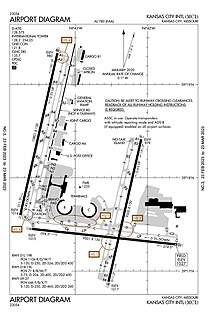
Kansas City International Airport is a public airport 15 miles (24 km) northwest of Downtown Kansas City in Platte County, Missouri.

Teterboro Airport is a general aviation relief airport in the boroughs of Teterboro, Moonachie, and Hasbrouck Heights in Bergen County, New Jersey. It is owned and managed by the Port Authority of New York and New Jersey and operated by AFCO AvPORTS Management. The airport is in the New Jersey Meadowlands, 12 miles (19 km) from Midtown Manhattan, which makes it popular for private and corporate aircraft. The airport has a weight limit of 100,000 pounds (45,000 kg) on aircraft, making it nonviable as an airline airport.

Aviation safety is the study and practice of managing risks in aviation. This includes preventing aviation accidents and incidents through research, educating air travel personnel, passengers and the general public, as well as the design of aircraft and aviation infrastructure. The aviation industry is subject to significant regulation and oversight.
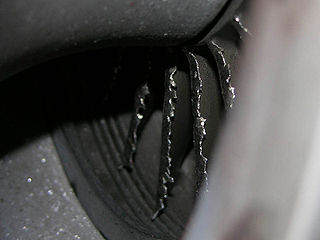
In aviation and aerospace, foreign object damage (FOD), is any particle or substance, alien to an aircraft or system, which could potentially cause damage.
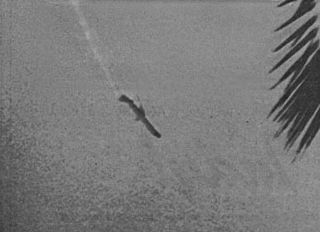
Aeroméxico Flight 498 was a scheduled commercial flight from Mexico City, Mexico to Los Angeles, California, United States, with several intermediate stops. On Sunday, August 31, 1986, the McDonnell Douglas DC-9 operating the flight was clipped in the tail section by N4891F, a Piper PA-28-181 Cherokee owned by the Kramer family, and crashed into the Los Angeles suburb of Cerritos, killing all 64 on the DC-9, all three on the Piper and an additional 15 on the ground. Eight on the ground also sustained minor injuries. Blame was assessed equally on the Federal Aviation Administration (FAA) and the pilot of the Cherokee. No fault was found with the DC-9 or the actions of its crew.

A bird strike—sometimes called birdstrike, bird ingestion, bird hit, or bird aircraft strike hazard (BASH)—is a collision between an airborne animal and a moving vehicle, usually an aircraft. The term is also used for bird deaths resulting from collisions with structures such as power lines, towers and wind turbines.
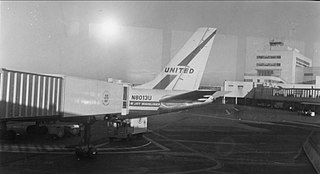
On Friday, December 16, 1960, a United Airlines Douglas DC-8 bound for Idlewild Airport in New York City collided in midair with a TWA Lockheed L-1049 Super Constellation descending toward LaGuardia Airport. The Constellation crashed on Miller Field in Staten Island and the DC-8 in Park Slope, Brooklyn, killing all 128 aboard the two aircraft and six people on the ground. The accident was the world's deadliest aviation disaster at the time.

A chicken gun or flight impact simulator is a large-diameter, compressed-air gun used to fire bird carcasses at aircraft components in order to simulate high-speed bird strikes during the aircraft's flight. Jet engines and aircraft windshields are particularly vulnerable to damage from such strikes, and are the most common target in such tests. Although various species of bird are used in aircraft testing and certification, the device acquired the common name of "chicken gun" as chickens are the most commonly used 'ammunition' owing to their ready availability.

United Airlines Flight 297 was a scheduled flight from Newark International Airport to Atlanta that crashed 10 miles (16 km) southwest of Baltimore on November 23, 1962, killing all 17 people on board. An investigation concluded that the aircraft, a Vickers Viscount 745D turboprop airliner, had struck at least two whistling swans, which caused severe damage to the plane, resulting in a loss of control.
Chandler Municipal Airport is in Maricopa County, Arizona, United States, 3 miles southeast of Chandler, which owns it. The National Plan of Integrated Airport Systems for 2011–2015 categorized it as a general aviation reliever airport.

Ohio State University Airport is a public airport six miles (10 km) northwest of downtown Columbus, in Franklin County, Ohio, United States. It is owned and operated by Ohio State University in Columbus, not to be confused with Ohio University in Athens, which owns the Ohio University Airport. It is also known as the OSU Don Scott Airport, named after Donald E. Scott, an OSU alumnus who died during his training as a pilot in the United Kingdom during World War II.
In aviation, a mid-air collision is an accident in which two or more aircraft come into unplanned contact during flight. Owing to the relatively high velocities involved and the likelihood of subsequent impact with the ground or sea, very severe damage or the total destruction of at least one of the aircraft usually results.

Wildlife Services is the program intended to provide Federal leadership and skill to resolve wildlife interactions that threaten public health and safety, as well as agricultural, property, and natural resources. The program is part of the United States Department of Agriculture’s Animal and Plant Health Inspection Service (APHIS).

On August 8, 2009, at 11:53 a.m. (15:53 UTC), nine people died when a tour helicopter and a small private airplane collided over the Hudson River near Frank Sinatra Park in Hoboken, New Jersey. The aircraft were in an area known as the "Hudson River VFR Corridor", which extends from the surface of the river to altitudes of 800 to 1,500 feet at various locations along the Hudson River in the immediate area of New York City. Within this corridor, aircraft operate under visual flight rules (VFR), under which the responsibility to see and avoid other air traffic rests with the individual pilots rather than with the air traffic controller.

On February 26, 1973, a private Learjet 24 crashed shortly after take-off from DeKalb–Peachtree Airport in Chamblee, Georgia, United States. The aircraft, registration N454RN, owned by a private corporation, struck birds shortly after lifting off. Air traffic control advised the flight crew of smoke trailing from their left engine; the crew said they would not be able to return to the airport. The aircraft impacted the roof of an apartment building and came to rest in a ravine. All five passengers and two crew members aboard the aircraft were killed; a person in the apartment building suffered severe burns.

On January 15, 1987, at 12:52 local time, SkyWest Airlines Flight 1834 a Swearingen SA-226TC, and a Mooney M20 were involved in a midair collision near Kearns, Utah. The two pilots and six passengers aboard the METRO II and the two pilots aboard the Mooney were killed. NTSB investigators primarily blamed the small plane pilots for wandering into restricted airspace, but a judge later assigned 51% responsibility to FAA air traffic controllers.
Carla J. Dove is an American researcher who specializes in identifying birds that have gotten trapped in airplane engines, known as bird strikes. She is currently the Program Manager for Feather Identification Lab in the Division of Birds at the National Museum of Natural History. Her work helps promote wildlife safety, as well as pave the way for the development of preventative measures that will decrease the chance of wildlife impacting airplanes. She has published over 40 articles on her research so far.

Around 8:27 a.m. on July 31, 2020, a de Havilland DHC-2 Beaver collided with a Piper PA-12 over the Kenai Peninsula, Alaska, approximately two miles northeast of Soldotna Airport, near mile 91.5 of the Sterling Highway. Most of the wreckage landed about 200 yards (180 m) from the road. Alaska State Representative Gary Knopp was piloting one of the aircraft and was killed in the accident.

The 2021 Centennial Airport mid-air collision occurred on approach to Centennial Airport near Denver, Colorado, on 12 May 2021.
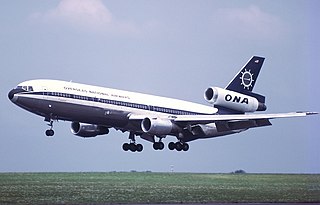
Overseas National Airways (ONA) Flight 032 was a non-scheduled positioning flight operated by Overseas National Airways with a McDonnell Douglas DC-10-30CF. On November 12, 1975, the flight crew initiated a rejected takeoff after accelerating through a large flock of gulls at John F. Kennedy International Airport, resulting in a runway excursion. Of the 139 aircraft occupants, all survived, while the aircraft was destroyed by an intense post-crash fire. The National Transportation Safety Board concluded that the probable cause of the accident was bird ingestion into the right-hand engine, causing an uncontained engine failure that ruptured several landing gear tires and disabled the engine's hydraulic system, in turn partially disabling the spoilers and the landing gear brakes. Contributing to the accident was the resultant failure of the affected engine's thrust reverser and the wet runway. The accident aircraft is claimed to be the largest commercial airliner ever destroyed due to a bird strike.
References
- ↑ Richard Albert Dolbeer (1969). "A Study of Population Density, Seasonal Movements and Weight Changes, and Winter Behavior of the Eastern Box Turtle, Terrapene c. carolina L., in Eastern Tennessee". University of Tennessee, Knoxville.
- 1 2 3 4 5 Bradley F. Blackwell (Fall 2009). "A Tribute to Richard A. Dolbeer: scientist, innovator, manager, and mentor". Human–Wildlife Conflicts. p. 296.
- 1 2 3 Sims, Damon; Group, Northeast Ohio Media (17 January 2009). "Birds, planes fighting for the skies, Ohio expert says". cleveland.com.
- ↑ Bogaisky, Jeremy. "Blood In The Sky: 10 Years After The Miracle On The Hudson, Bird Strikes Remain An Unsolved Danger For Aviation". Forbes.
- ↑ Koerner, Brendan I. "It's a Bird! It's a Plane! The Midair Collisions Menacing Air Travel". Wired.
- ↑ Borrell, Brendan. "What is a bird strike? How can we keep planes safe from them in the future?". Scientific American.
- 1 2 3 4 Krausman, Paul R.; III, James W. Cain (15 October 2013). Wildlife Management and Conservation: Contemporary Principles and Practices. JHU Press. p. 148. ISBN 9781421409870 – via Google Books.
- 1 2 3 "Biologist: Birds competing for airspace with planes". Cnn.com.
- ↑ "FOXNews.com – Birds, an aviation hazard, hit 1 in 10,000 flights – Local News – News Articles – National News – US News". Foxnews.com.
- 1 2 Linz, George M.; Avery, Michael L.; Dolbeer, Richard A. (19 September 2017). Ecology and Management of Blackbirds (Icteridae) in North America. CRC Press. ISBN 9781351643559 – via Google Books.
- ↑ Negroni, Christine (10 June 2016). "At Westchester Airport, Where Bald Eagles (and Their Friends) Dare". The New York Times .
- ↑ Mark, Robert P. "Wildlife Strike Reports Continue to Increase". Aviation International News.
- ↑ Frostenson, Sarah (19 January 2016). "Planes killed 13,159 birds in 2014 — and one iguana". Vox.
- ↑ "Efforts mitigate danger of aircraft bird strikes: Travel Weekly". Travelweekly.com.
- ↑ Uhlfelder, Eric (17 October 2013). "Opinion – Those Hazardous Flying Birds". The New York Times .
- ↑ "The US Airways Crash: A Growing Bird Hazard -- Printout -- TIME". content.time.com.
- ↑ "'Miracle on the Hudson': How Airlines Try to Avert Growing Bird Strike Risk". Der Spiegel. Spiegel Online. 19 January 2009.
- ↑ "Keeping Birds Out of Jet Engines". American Scientist. 7 December 2018.
- ↑ "HHSAA Newsletter : Vol. XVI, No. 2" (PDF). Huronhs.com. December 2018. Retrieved 26 February 2019.
- ↑ "SAUNDRA ANNE DOLBEER 1945–2017". The Cleveland Plain Dealer. July 2, 2017.